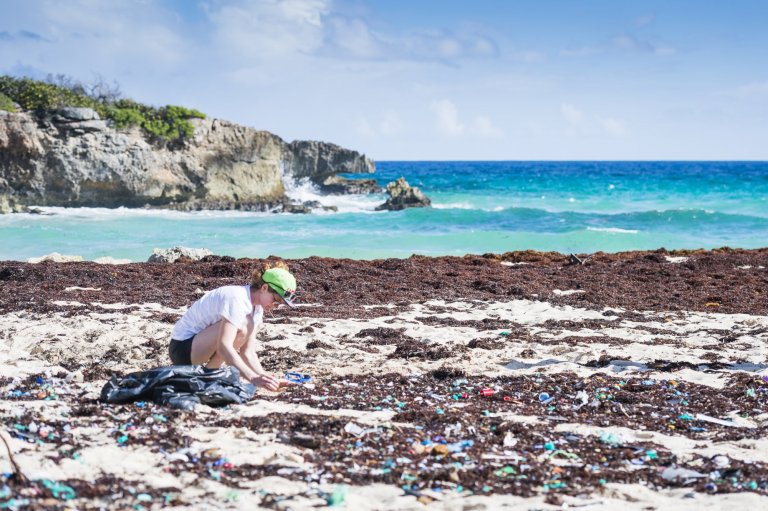
© Cyril FRESILLON / PEPSEA / CNRS Images
View the mediaFolder
Plastic is everywhere, and it’s a real environmental disaster. Yet, if there is one place where its existence is especially problematic, it is the ocean, and we need to act quickly. The CNRS is mobilizing against plastic pollution of the oceans.

© Cyril FRESILLON / PEPSEA / CNRS Images
View the mediaThe words "plastic pollution" may immediately bring to mind images of plastic bags or packaging left at the side of the road. And you’re not wrong, but the real crisis is happening in the oceans. In fact more than ten million tonnes of plastic waste are dumped into the oceans every year, enough to form a floating "seventh continent". However, it is below the surface that the vast majority of this plastic is spread, gradually degrading to become "micro-plastic" that are present everywhere and often invisible due to their size and because marine organisms ingest them. It endangers these organisms and their habitats, as well as humans who ultimately find them on their plates in many seafood products. Even more so since these micro-pollutants bind particularly well with organic pollutants, undoubtedly affecting our health and environment.
After decades of neglect, it has now become urgent to reduce this pollution by any means necessary and to find ways to "clean" the plastic from our oceans. So we invite you to join us and meet the scientists who are studying this pollution and trying to find innovative solutions.
Our work is guided by the way scientists question the world around them and we translate their research into images to help people to understand the world better and to awaken their curiosity and wonderment.